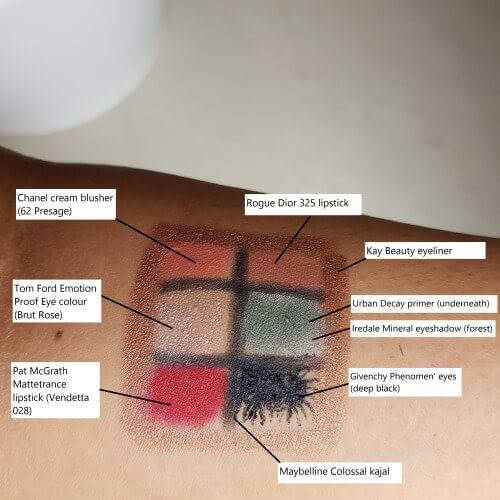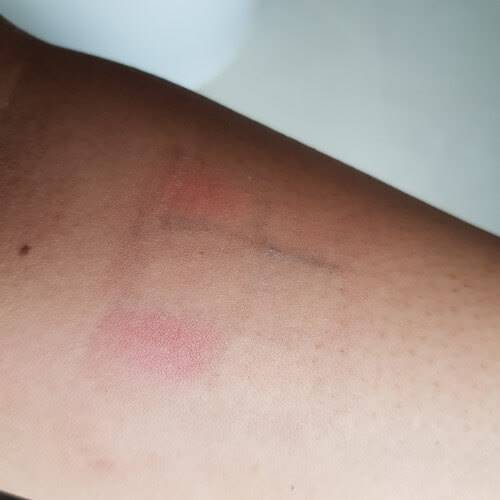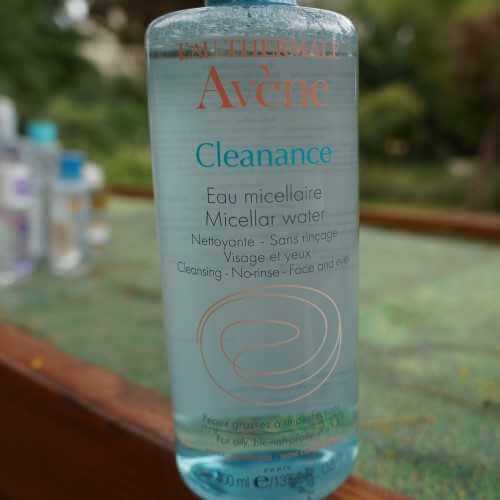Micellar waters are a very fancy name for a mild cleanser with the following characteristics: they have mild surfactants (or cleaning agents); are non-foaming and contain moisturising ingredients.
You can read about the technical detail on how micellar water or facial cleansers work at this BLOG.
What am I testing and why?
I am road-testing the Avene micellar water, specifically the claim that it removes make-up.
Before photo
After applying a copious mix of waterproof, pigmented and shiny make-up, my forearm looked like this:

I then pressed down a pre-soaked (in micellar water) cotton pad on the above patch and counted to 5. Finally, I wiped over this area (quite firmly) exactly 4 times.
After photo

The results are quite awful: the Pat McGrath lipstick, cream blusher, kajal and Kay beauty eyeliner are all quite prominently visible. Looking at the ingredients label, I am not surprised by the product’s poor performance….
The ingredients…
The primary surfactant is PEG-6 Caprylic/Capric glycerides, that’s commonly used in micellar waters as it’s a gentle cleanser. The second surfactant maybe Cetrimonium bromide – but I think its an anti-bacterial agent.
The emollients appear to be the Glycols (Butylene and Pentylene) – their primary function is to increase softness and smoothness – which this product does.
A solvent in the form of PEG-40 hydrogenated castor oil, is also present to help dissolve oily make-up.
To buy, or not to buy?
This is a micellar water for oily skin and it may work perfectly well at removing every day sebum, pollutants, dead skin etc. But I would not buy it if the intent was to use it as a make-up remover.
P.S. The complete ingredient label is: Aqua, Butylene Glycol, Pentylene Glycol, PEG-6 Caprylic/Capric glycerides, PEG-40 hydrogenated castor oil, Cetrimonium bromide, Disodium EDTA, Fragrance and Glyceryl laurate
